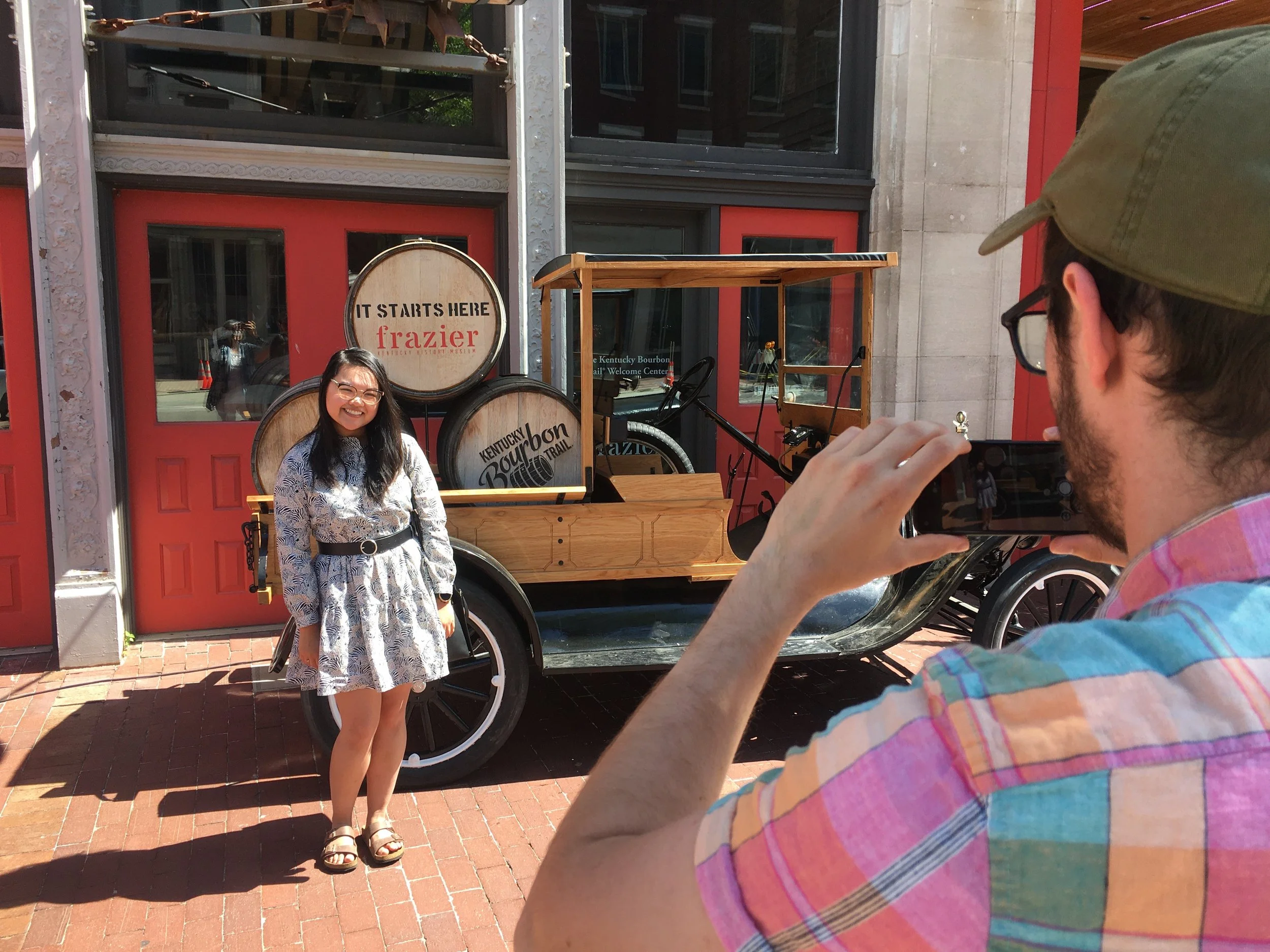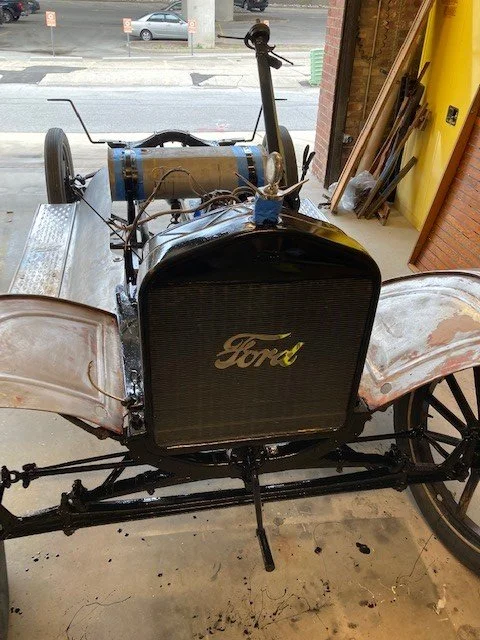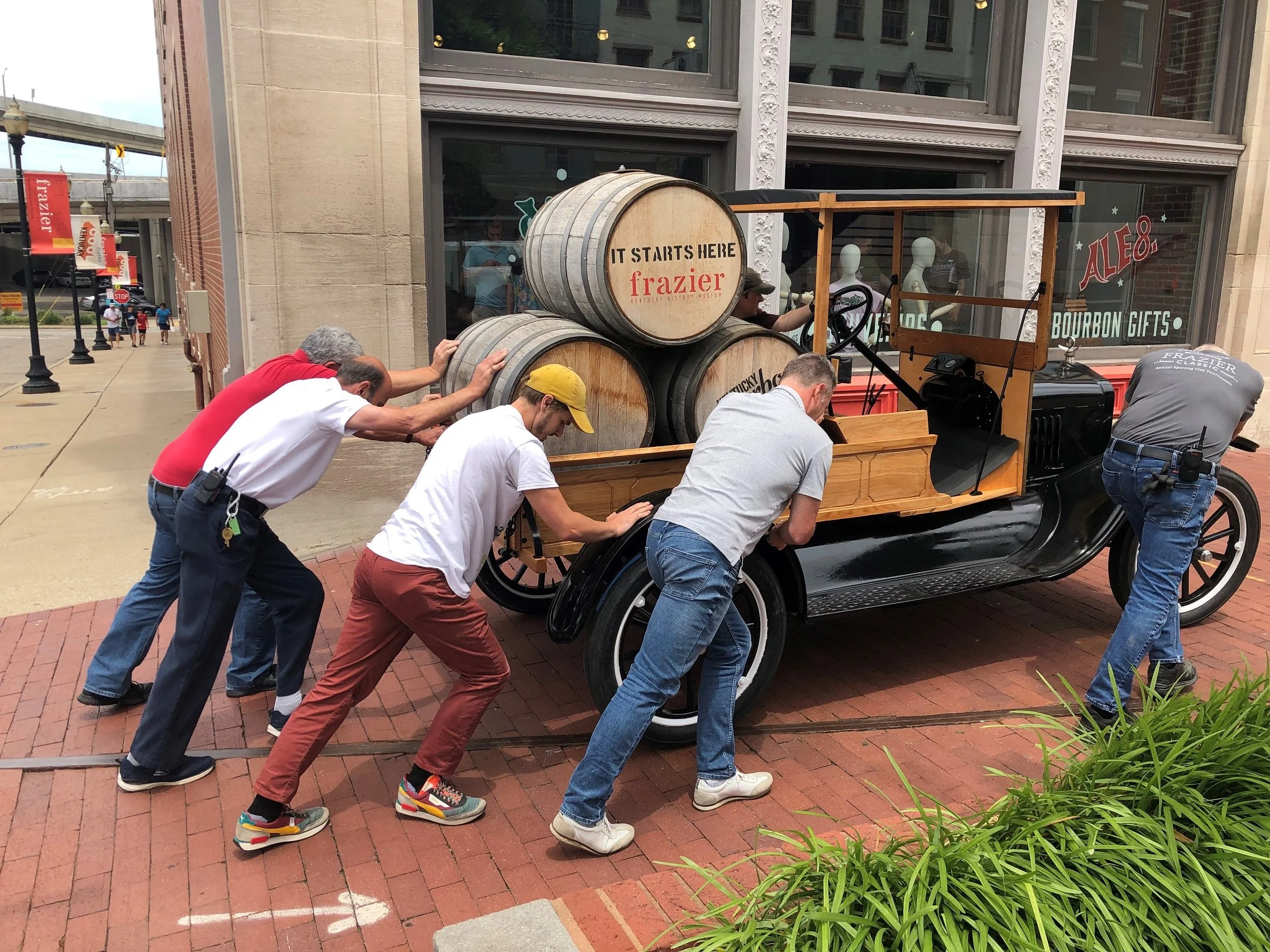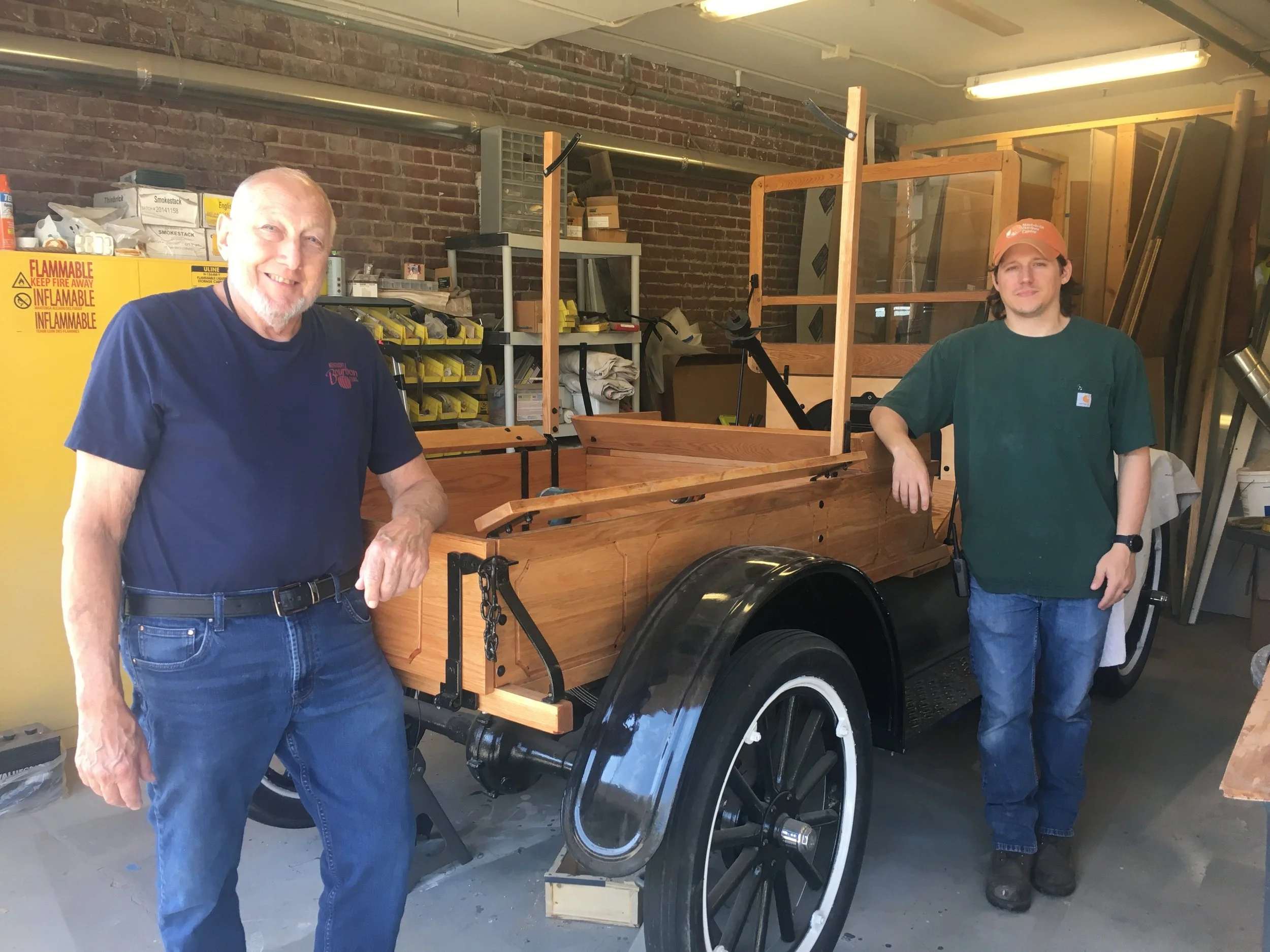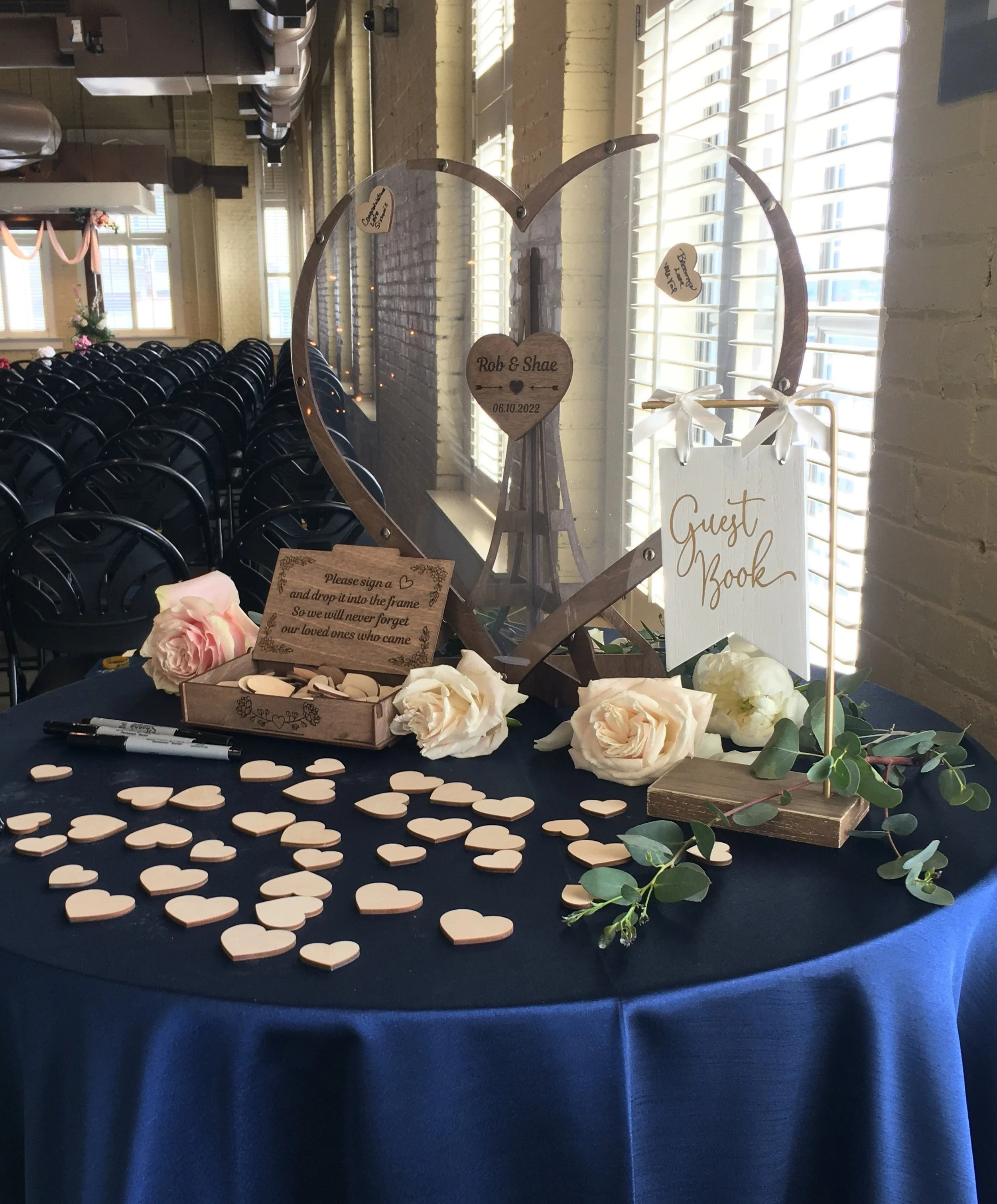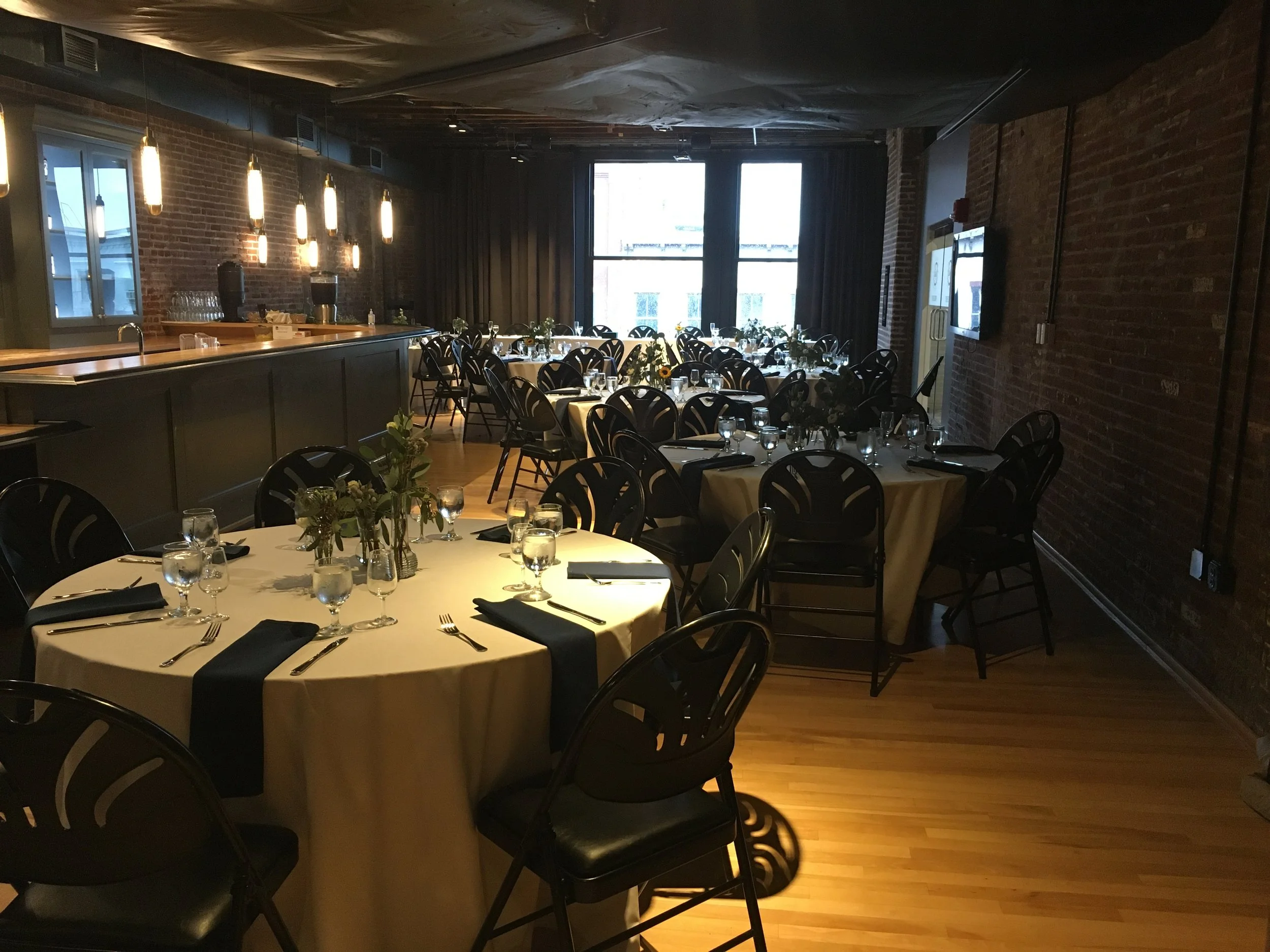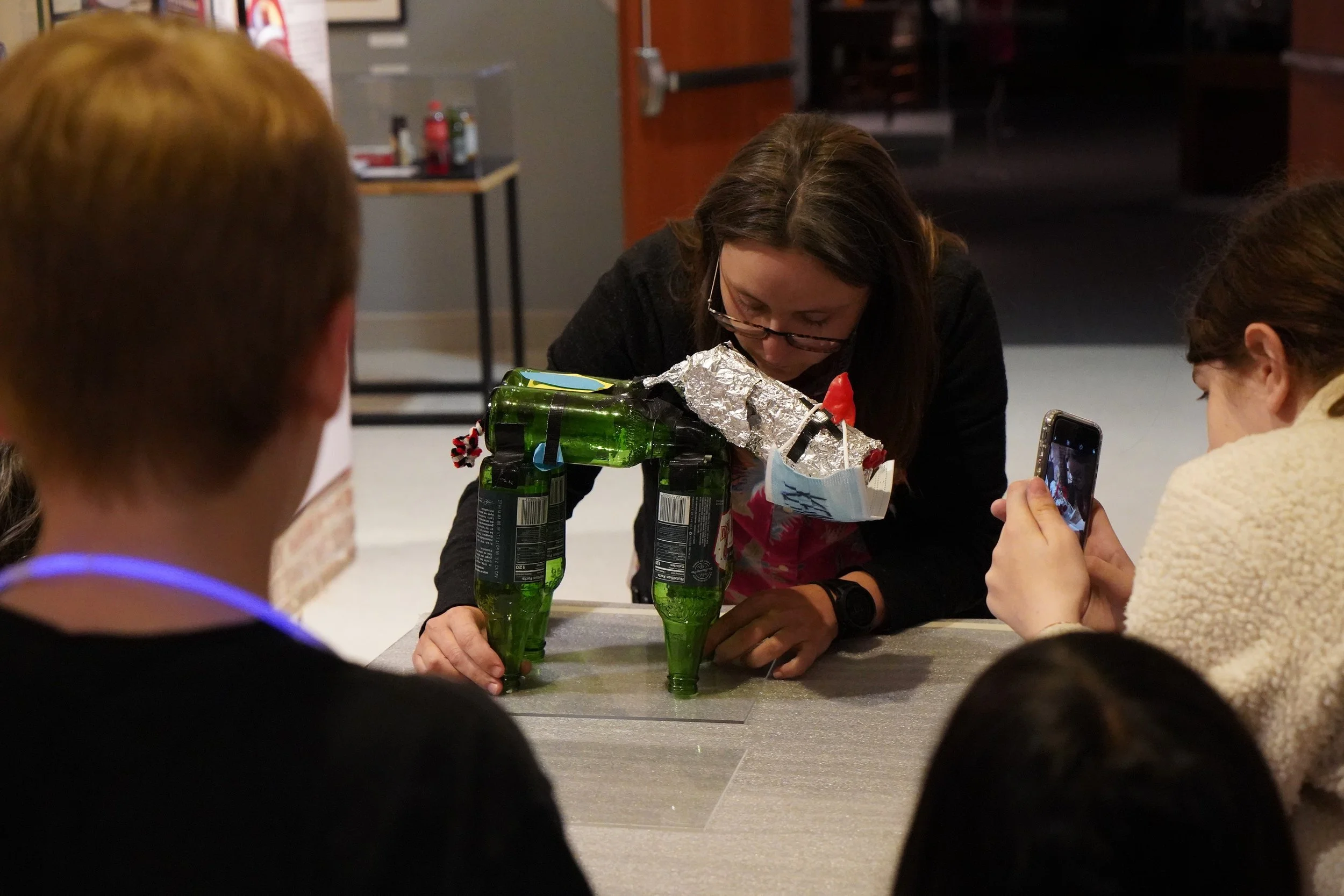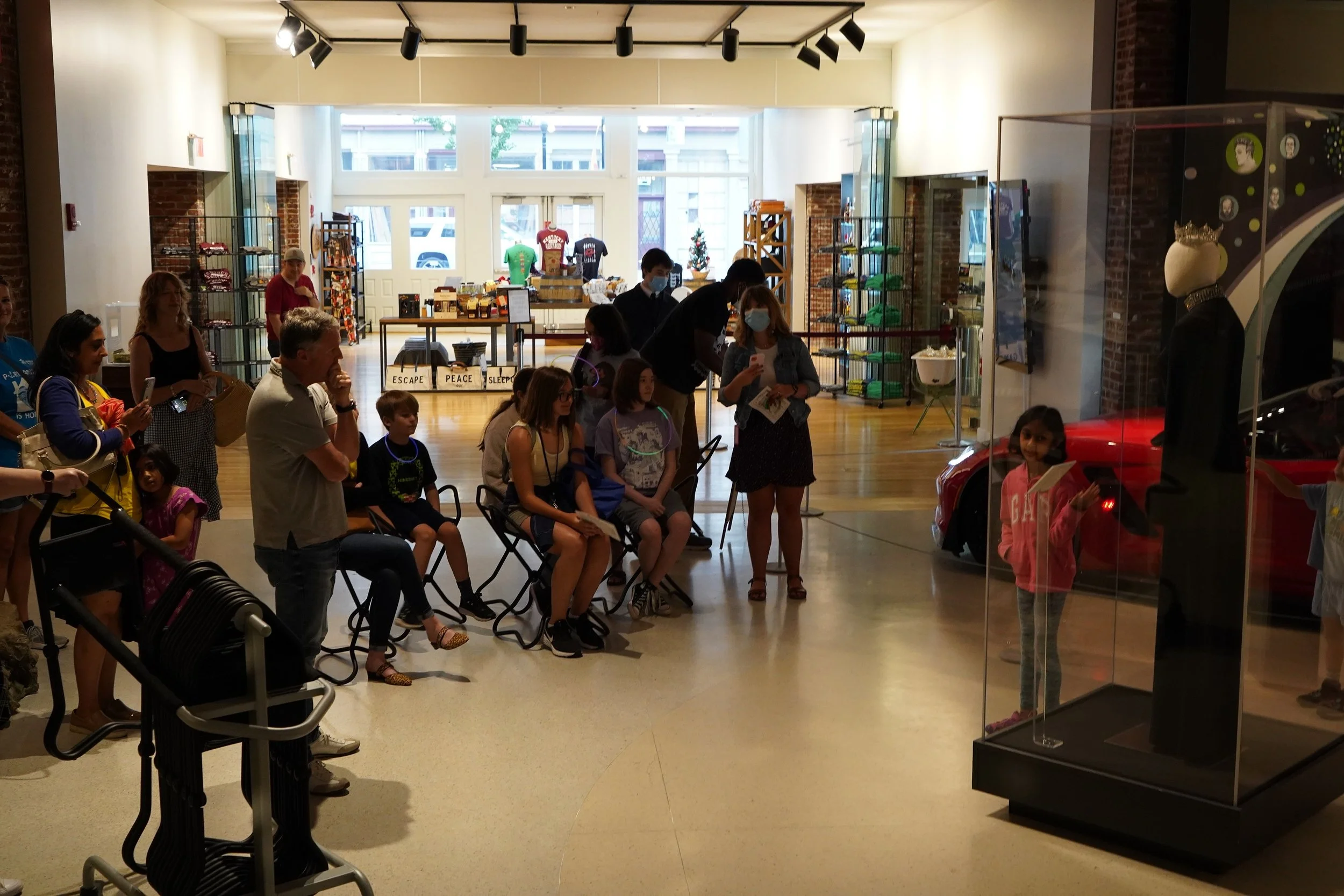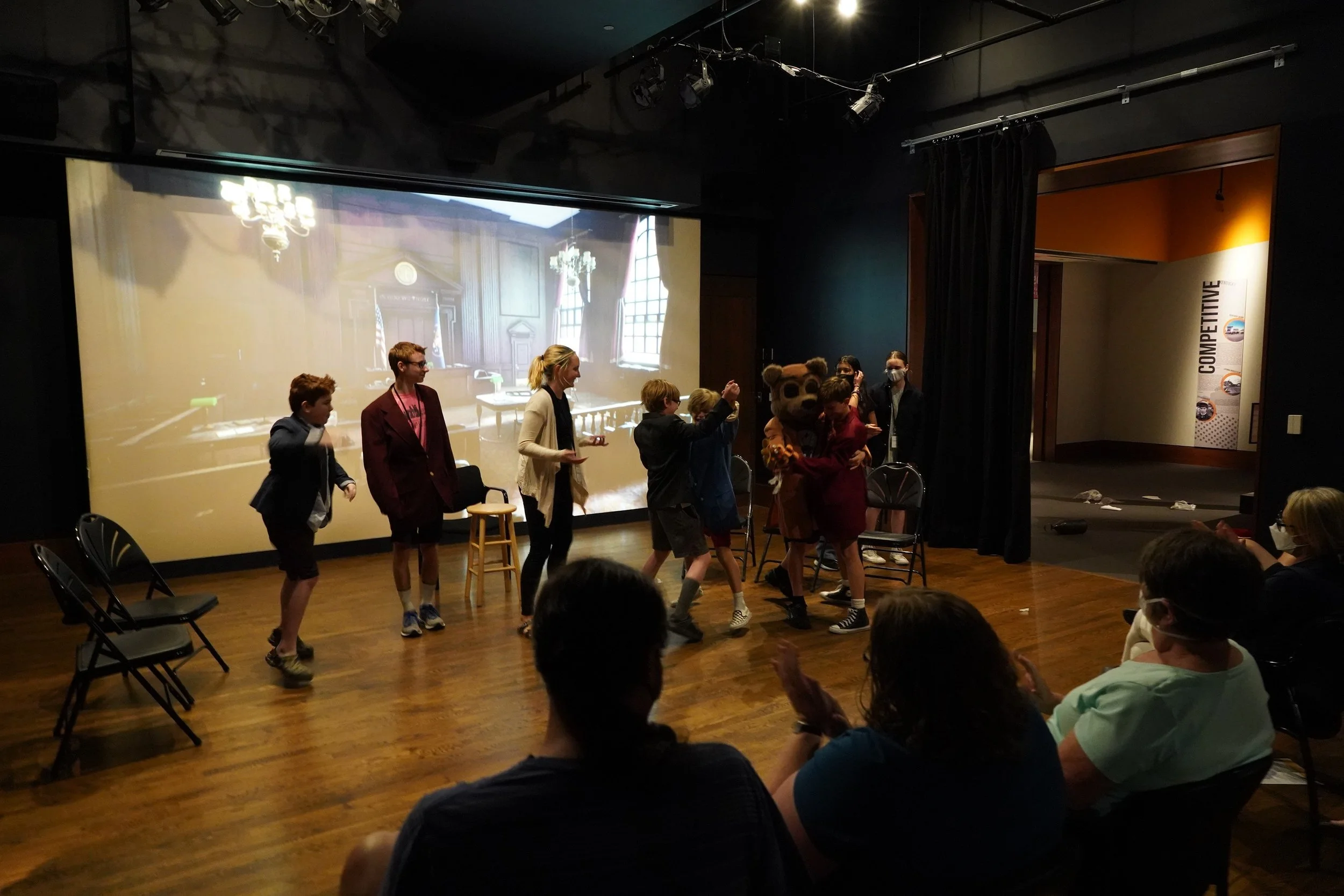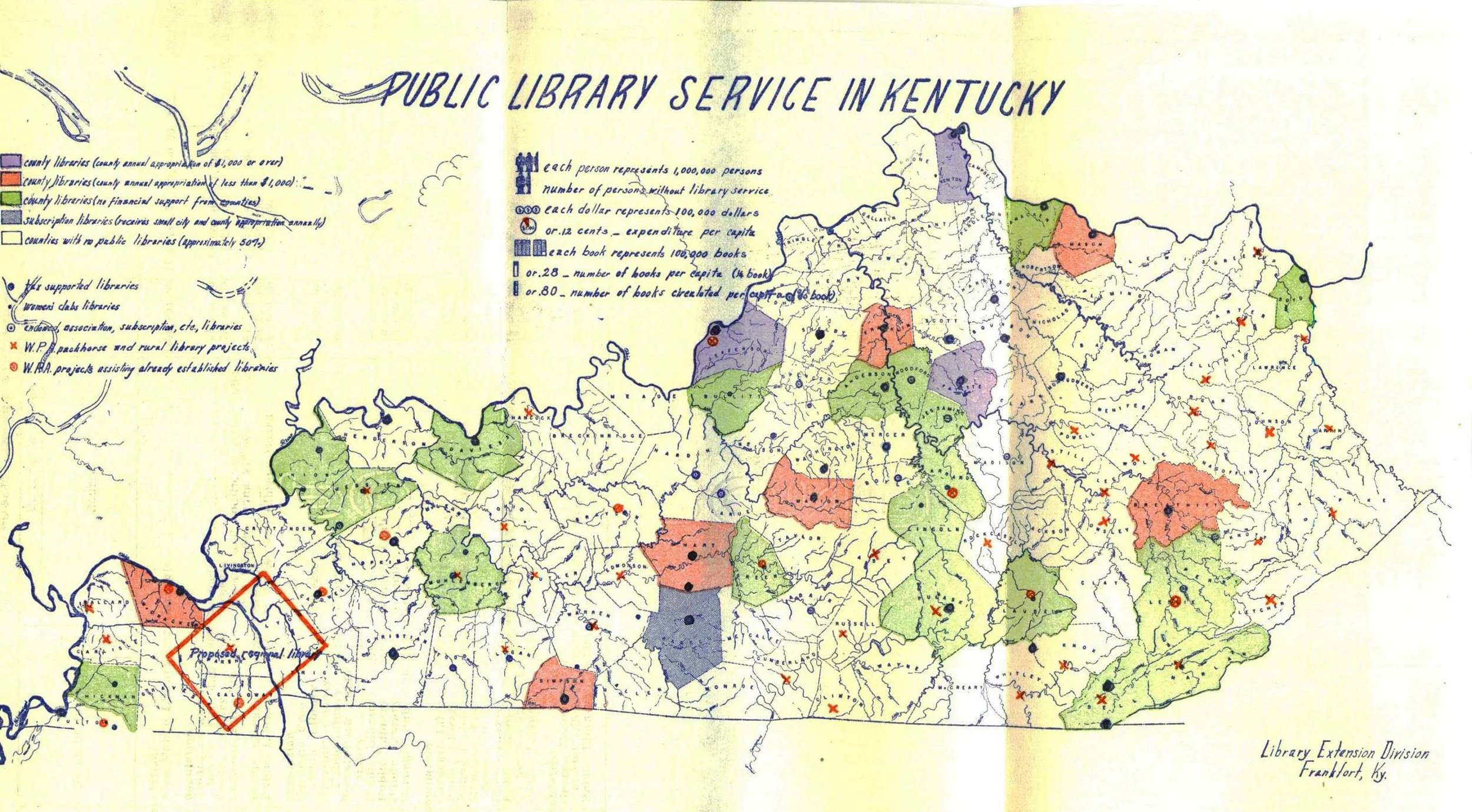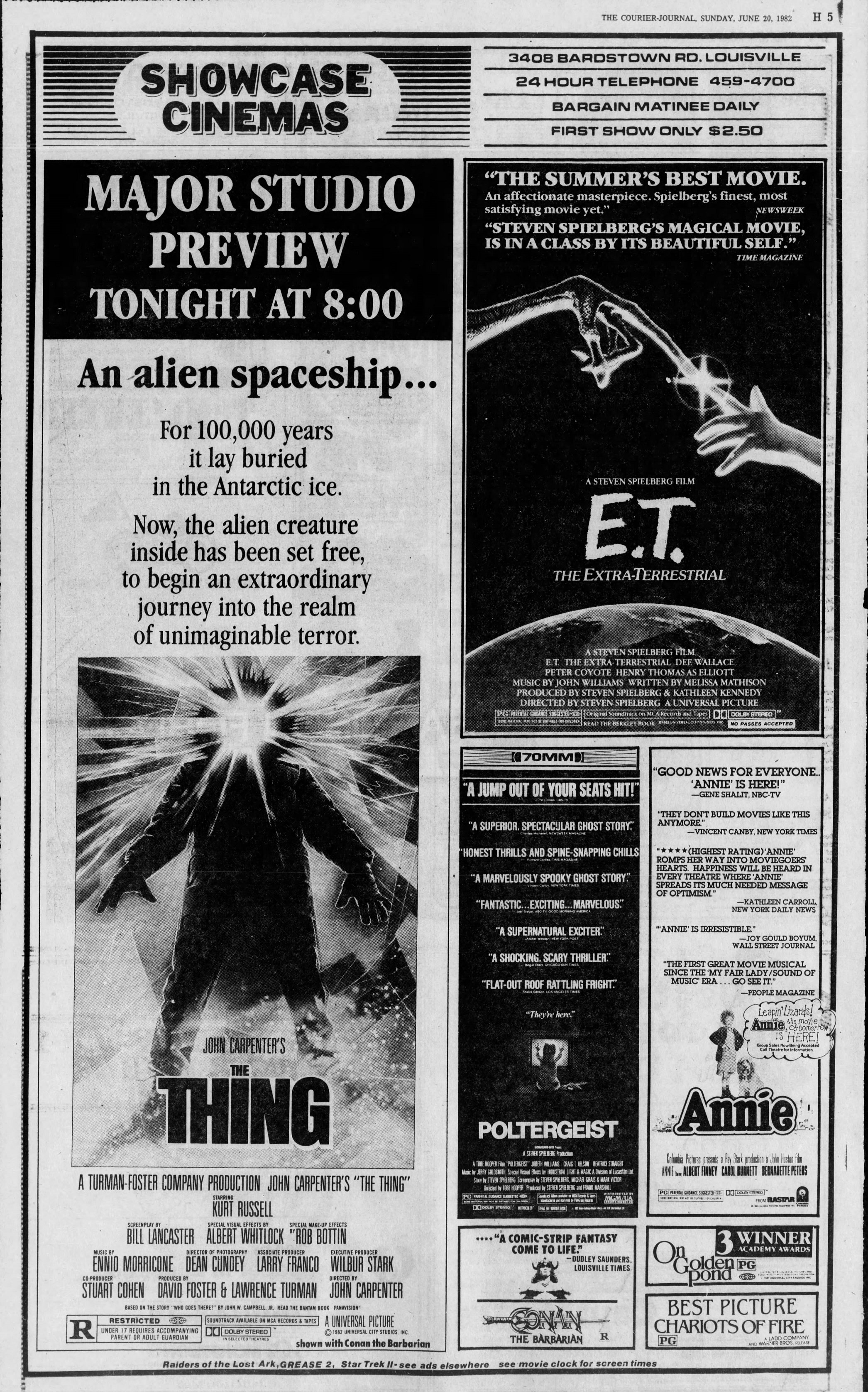1920s Model T Reinstalled, Origin of 1983 Midnight Star Song “Freak-A-Zoid,” Revolutionary War Veteran James Forten Performance, and More
Good Monday morning,
Where do you stand? Do you live with the Cards or die with the ‘Cats? Do you favor the rich history of St. Xavier or the undeniable football dynasty at Trinity? In the oldest rivalry west of the Alleghenies, which dates to 1893, do you root for Manual or Male? I’m not trying to get your blood boiling, but in these bouts of conflict, there is no middle ground.
It’s true: We are just four weeks removed from the opening of our outstanding new permanent exhibition, The Commonwealth: Divided We Fall. If you haven’t seen it yet, put your notion into motion and plan the trip. If there’s an exhibition anywhere in the world that better represents Kentucky’s rich history, diverse people, and incredible place in American history, I’ll move to Alaska.
Next up for the Frazier’s exhibition team is Rivalries, opening November 5. We’d love your help in finding the right stories and building the right experience. From the Commonwealth’s first ever football game in 1880 between Centre College and Transylvania to KCD and Sacred Heart battling for women’s lacrosse state championships, this exhibition is sure to spark heated debate. Check out this video to get a better idea what we’re looking for.
In other Frazier news, Rachel Platt writes about our Model T, now back on Main Street, and the great work from our Zac Hughes and Dave Ridge in rebuilding it. With wedding season in full gear, Steve Rockhold shares some of the latest and greatest here at the Frazier, as Hayley Rankin takes a historical look at wedding-related objects in our collection. Then our Simon Meiners writes about the Kentucky origin of a song many of us have danced to at weddings, Midnight Star’s 1983 hit “Freak-A-Zoid.”
If you missed it, we’ll direct you to a story about the Frazier’s Bridging the Divide program series that aired on CBS Evening News. There’s a Summer Camp takeover, a trip to Chicago’s Jerk Tacos in the Russell neighborhood, and the latest author submission in our Book Club. Oh, and Contributor-level memberships are $14 off using the promo code PASSPORT now through Friday!
I hope you enjoy.
Andy Treinen
President & CEO
Frazier History Museum
This Week in the Museum
Frazier’s Newly Renovated 1920s Ford Model T Reinstalled on Main Street
Michigan visitors Ivory Hoang and Keaton McGregor take pictures posing in front of the newly reinstalled Model T outside the Frazier Museum’s Kentucky Bourbon Trail® Welcome Center, June 20, 2022. Credit: Frazier History Museum.
When Ivory Hoang and Keaton McGregor from Michigan were taking pictures in front of our Ford Model T on Main Street, they didn’t realize it was “new and improved” after a two-month makeover.
Makeovers are necessary when you’re a Ford Model T dating back to the 1920s. Our best guess is it was actually Ford Model A with a 1917 Model T Engine.
Model T back on display outside the Frazier’s Kentucky Bourbon Trail® Welcome Center, June 17, 2022. Credit: Frazier History Museum.
From left, Mick Sullivan and Simon Meiners pose in the Model T wearing 1920s attire for the Michter’s Speakeasy at the Frazier, June 23, 2022. Credit: Frazier History Museum.
Donated to the Frazier years ago, the Model T is now used to help welcome visitors to our museum, which is the official starting point of the Kentucky Bourbon Trail®.
The vehicle was modified to haul Bourbon barrels, much like bootleggers did back during Prohibition.
Model T stripped to the metal, c. 2022. Credit: Frazier History Museum.
Model T wood laid out, c. 2022. Credit: Frazier History Museum.
Its glory days aren’t over yet thanks to Zac Hughes and Dave Ridge, dedicated employees of the Frazier History Museum who decided to do the work themselves. They stripped the vintage vehicle down to the bare bones of just metal and the engine to build it back better!
Frazier staff push the newly renovated Model T up Ninth Street from Washington to Main, June 17, 2022. Credit: Frazier History Museum.
Frazier staff roll the Model T up the sidewalk on Main Street, June 17, 2022. Credit: Frazier History Museum.
All of the wood is now new except for the windshield, detailed and customized. We would say take it for a spin, but those days are over. Once the rehab work was completed on the vehicle in the back of the museum, forget horsepower: it took “manpower” to get it up the hill and back into place.
Thanks to Zac and Dave for keeping our history alive and looking so good.
From left, Frazier facilities manager Dave Ridge and building manager Zac Hughes pose with the Model T, 2022. Dave and Zac renovated the vehicle. Credit: Frazier History Museum.
We hope you’ll get inside on your next visit and take a picture or a selfie, because our Model T looks picture perfect.
Rachel Platt
Director of Community Engagement
From the Collections: Wedding Shoes and June Brides
While the autumn wedding trends in recent years have caused September and October to take the top spots for the most popular wedding months, June remains one of the most common months in which to get married. In fact, as you are reading this, you can probably think of someone who has gotten married this month, whether a family member or someone on your Facebook newsfeed. Maybe you just went to one last weekend!
June weddings have stood the test of time for many reasons apart from nice weather since the establishment of the twelve-month calendar. The Romans named June after their goddess Juno, who represents fertility as a protector of women. Families believed a June wedding would bring a fruitful and blessed marriage to the new couple. Besides ancient tradition, June was popular throughout the centuries for practical reasons as well. From the Middle Ages to the eighteenth century, people commonly bathed only once or twice a year, with one of those baths occurring in May. Thus, the young couple (and everyone in attendance) would feel fresher and undoubtedly smell much better.
Additionally, the best variety of flowers was available immediately following the spring months, which allowed June brides to choose different flowers not only for their fragrance but also for symbolic meaning. June also became common due to the church calendar that pushed weddings until after Lent and the reading of any banns. The banns were official announcements of intents to marry that gave anyone in the congregation opportunity to object, a process that would often take weeks to complete.
With all of the above combined over millennia, it’s no surprise that June is cemented in our psyche as a marriage month despite the changing trends of twenty-first century wedding culture.
From front, pair of off-white, silk satin wedding slippers with cut steel and bow decoration with 2.5-inch Louis heels. Maker’s mark reads “Fine Shoes for Andrew Mahler New York.” Credit: Frazier History Museum.
From side, pair of off-white, silk satin wedding slippers with cut steel and bow decoration with 2.5-inch Louis heels. Credit: Frazier History Museum.
The pair of wedding slippers in our collection belonged to a June bride by the name of Gwynneth Moncrieff Burn who married Rev. Morton Charnley Stone on June 13, 1916.
The couple lived in Chicago before settling in Westchester, New York. After her husband passed in 1973, Mrs. Gwynneth Stone likely lived the final year of her life in Louisville where her son resided, as the Courier Journal recorded her passing on August 16, 1974.
Hayley Rankin
Manager of Collection Impact
Selected Wedding Reception Spaces at the Frazier
Guest book table for a wedding reception in the Frazier’s Fourth Floor Loft, June 10, 2022. Credit: Frazier History Museum.
Tables set up for a wedding reception in the Frazier’s Order of the Writ, June 10, 2022. Credit: Frazier History Museum.
Wedding season is in full bloom and love is in the air at the Frazier Museum, where we take great pride in helping couples kick off their marriage journey. Begin the occasion on our rooftop garden, providing an elegant vista for your nuptials. After the ceremony, invite your guests down to the third floor Order of the Writ or Speakeasy bar where they can enjoy a cocktail hour while touring our Spirit of Kentucky® and Lewis and Clark exhibitions. Next up is the Fourth Floor Loft, the perfect blank slate space for a beautiful, rocking reception (and quite possibly the best dance floor in town . . .). Of course, you have every opportunity to get creative when planning your big day, which means you can’t forget about our First Floor Great Hall for the reception, cocktail hour, ceremony . . . you get the point!
If you’d like to take a tour with the events team, feel free to give us a call or simply fill out an inquiry here.
We’re already filling up spots for 2023 and 2024, but we would love to save one for you!
Follow us on Instagram @fraziermuseumevents.
Steve Rockhold
Event Coordinator
If you search the terms “freakazoid” or “freak-a-zoid” in newspapers.com, the world’s largest online newspapers archive, the earliest hit you’ll get is a reference to the Midnight Star song “Freak-A-Zoid.” Midnight Star was a funk band formed in Frankfort, Kentucky, in 1976, and its song “Freak-A-Zoid” cracked the “Top 20 R&B Singles” chart published in a July 1, 1983, newspaper issue.
Front cover of the sleeve for the vinyl LP of No Parking on the Dance Floor by Midnight Star, which includes the track “Freak-A-Zoid.” SOLAR Records, 1983. Credit: Discogs.
Side A of the vinyl, 12”, 33 1/3 RPM, Single “Freak-A-Zoid” by Midnight Star. SOLAR Records, 1983. Credit: Discogs.
Now, I was born in 1988—so I don’t have firsthand memories of the song’s release and commercial success (it peaked at number two on the R&B Singles chart). But I know, growing up, at some point, I encountered the word “freakazoid.” Was it a playground insult? Did I see ads for Freakazoid!, the show the WB aired from 1995 to 1997? Most likely, I learned the word from watching a 1996 episode of The Simpsons in which Apu sings the chorus of the song.
So what is the origin of “freakazoid”?
In 2019, I set out to find the answer.
At the time, the Frazier was hosting an exhibition on Kentucky music that highlighted Midnight Star, among other artists. So I contacted Midnight Star founding member Reggie Calloway, a trumpeter and vocalist who produced and, with his brother Vincent Calloway and Bill Simmons, co-wrote “Freak-A-Zoid,” to help solve the mystery.
Raised in Southwick in Louisville, the Calloway brothers are nephews of the late US Air Force Major Julius Calloway Jr. (1924–2012), the Tuskegee Airman who founded Calloway Flying Services at Bowman Field. Their grandparents’ home—which they later turned into a rehearsal space—was in Chickasaw, which is why our curator included “Freak-A-Zoid” on the gallery playlist for the Frazier’s West of Ninth exhibition.
In our conversations, Reggie shared all about his childhood in Louisville, the band’s Kentucky roots—which dated back to kindergarten—and the origin and inspiration for “Freak-A-Zoid,” a word he’d gleaned from some fraternity brothers.
West Louisville Origins of Midnight Star
Born in Cheyenne, Wyoming, where his father was stationed in the Air Force, Reggie Calloway (b. 1955) relocated with his family to Louisville, Kentucky, where his brother Vincent (b. 1957) was born. The family first lived in Newburg, then moved to Southwick, a bygone housing project in what is now Park DuValle. The brothers attended both JFK Elementary School and Southwick Elementary School.
When Reggie was entering the fourth grade, the family moved to Cincinnati, Ohio. As a high school student, he was offered a scholarship to join the marching band at Kentucky State University, his mother’s alma mater, in Frankfort, Kentucky.
In September 1976, while attending KSU, Reggie formed the band Midnight Star: First, he added Bill Simmons, then Jeffrey Cooper and Kenneth Gant, followed by Belinda Lipscomb—a fellow KSU student with whom Reggie had attended kindergarten in Louisville—Bo Watson, Melvin Gentry, his brother Vincent Calloway, and finally, in 1982, Bobby Lovelace.
The group performed locally, around Ohio, Kentucky, and Indiana. Upon finding some success, the members decided to pursue music full-time. They moved to Louisville, where they turned 3810 Greenwood Avenue in Chickasaw, which had been the home of the Calloways’ late grandparents, into a rehearsal space.
In 1978, the group was given a showcase in New York City. The band members attempted to move to New York permanently, but following an incident in which their belongings were stolen, they decided to relocate to Cincinnati instead.
Birth of the Term “Freak-A-Zoid”
In 1982 or 1983, Reggie took a trip to Los Angeles to meet with record executives, produce tracks, and study music. When he returned to Cincinnati, his road crew informed him that some of his old Omega Psi Phi fraternity brothers had come by asking for him. He was told that during their visit, the fraternity brothers had used the term “freakazoid”—a term Reggie believes was coined around that time on college campuses in the US, where it was used to mean “beautiful lady.”
Reggie was immediately captivated and inspired by the term. Right away, he pulled aside two of his bandmates—his brother Vincent and Bill Simmons—and suggested they go out to the practice space in the garage to write a song. According to Reggie, in their adaptation, the word “freakazoid” is meant to describe a person who is so perfect, they seem to have been designed or programmed that way—“like an Android that was created to be a perfect mate,” he told me.
Writing and Composing the Song
During that initial practice session, Reggie began to mull over what kinds of beat, feel, and sound he hoped to achieve. Once he programmed a beat into the drum machine and laid down a bass line, the trio started jamming on it, from start to finish. They cranked out a chorus that was catchy, but unique. Reggie told me eighty to ninety percent of what they played in that session became usable.
Although they were not the primary players on the synth and the keyboard, the three songwriters from the initial jam session—Reggie, Vincent, and Bill—did make up the horn section. As horn players, they had drawn inspiration from R&B, soul, and funk acts like Kool & the Gang, Chicago, and Earth, Wind & Fire. But this new song established a new sound, a sound they worked to refine. The sound would come to be known as “techno-funk”: a vein of funk that incorporates elements of techno music.
The song required a lot of after-the-fact changes. When the band played the demo for Grand Master Walter Fegan, he remarked that there was a beat missing—an insight that Reggie says was crucial. It was an easy problem to correct, but the correction made a big difference. Reggie also says that he actually composed that beat back in the early 1970s when Reggie’s earlier group, a jazz act, was preparing its first album, Betwixt the Humps. Reggie only realized in 2009 that the beat for “Freak-A-Zoid” dates back that far.
“After the first draft of “Freak-A-Zoid” was finished, it was sent to the president of SOLAR Records, Dick Griffey, along with several other tracks for consideration for the album,” Reggie told me. “After Mr. Griffey mentioned the songs that he did like for usage, he failed to mention “Freak-A-Zoid.” When asked what about “Freak-A-Zoid?” he said: “Of course we’re going to do that one!”
Legacy of “Freak-A-Zoid”
Reggie said Deejays at nightclubs played the song right after the “Atomic Dog,” which, at the time, was the most amazing dance song—one that could never be outdone. People were worn out after ten or fifteen minutes of “Atomic Dog,” he said. So if “Freak-A-Zoid” could keep all those tired people on the dance floor, and perhaps attract more people, then they knew it was a hit.
““Freak-A-Zoid” had an amazing effect on dance culture, especially in cities like Los Angeles and New York where breakdancing was the craze,” Reggie told me. “It sold 100,000 copies in New York alone. Many dancers were using it to inspire their dance moves and fashion.”
One great contribution of “Freak-A-Zoid” was how it used the vocoder. Reggie’s brother, Vincent, is an expert on the vocoder, having been featured in a book about the subject, and was one of the pioneers of that style. Always a technological person, Vincent used to take apart telephones in order to figure out how to replicate their noises. So once he got his hands on a vocoder, he was enamored. Reggie says the vocoder dominates “Freak-A-Zoid” and carries the dance floor.
Some of the other members of Midnight Star had at first been reluctant to record the song: It marked a clear step in a new direction, a new aesthetic. Techno-funk is the art of mixing techno rhythms and synthesizers with the funky R&B feel achieved by musicians who play more traditional instruments (as opposed to just sequencers and computers). “Freak-A-Zoid” opened all of those doors, Reggie said. It crossed all barriers, all genres, all styles of music.
“It didn’t matter where you live, what race you are, what your background is,” he said. “When you heard that song, you immediately wanted to dance.”
Graphic promoting ceremony for Midnight Star’s induction into Cincinnati Black Music Walk of Fame on July 23, 2022, at Andrew Brady Music Center in Cincinnati, Ohio. Credit: Cincinnati Black Music Walk of Fame.
The Calloway brothers will be in Louisville July 27 and 30 to be honored by the Louisville Defender, among other notable figures to emerge from the Southwick neighborhood.
Sources
Midnight Star. Music video for “Freak-A-Zoid.” 1983.
“Top 20 R&B Singles Listed.” The Daily News-Journal. Murfreesboro, Tennessee. July 1, 1983: 7.
Reggie talks about “Freak-A-Zoid.” YouTube. November 2009.
Telephone interview with Reggie Calloway. October 8, 2019.
Telephone interview with Reggie Calloway. June 24, 2022.
Simon Meiners
Communications & Research Specialist
Camp Takeover Gives Campers Opportunity to Run a Museum
For years, the Frazier hosted a beloved camp for kids called Page to Stage. Based on our incredible library of historic interpretations, campers would spend a week writing and performing their own short performances based on historical events. All the campers got creative and were free to have as much fun as they wanted with their stories. It became an important part of campers’ summers, to the extent that, while camps were shut down during COVID, a group of Page to Stage fans got together outside and made their own open-air, socially distanced historic interpretation.
Last year, we decided that 2022 would be the year that Page to Stage got even more epic. And that’s when Camp Takeover was born!
Curator Amanda Briede installs student art in the “Inventive Kentucky” section of Cool Kentucky, June 13–17, 2022. Credit: Frazier History Museum.
The week of June 13–17, campers spent the week learning all about what goes into running a museum, from membership to exhibits. We had a variety of guests who taught important skills, from being a preparator to acting on stage. And then, during the last part of the week, campers chose how they would take over the museum: creating an exhibition, leading a tour, or designing an entire performance from start to finish.
A camper leads a tour in the Cool Kentucky exhibition, June 17, 2022. Credit: Frazier History Museum.
The grand finale of a camper-created performance, a Lewis and Clark–themed courtroom drama, staged in the Frazier’s Brown-Forman Theatre, June 17, 2022. Credit: Frazier History Museum.
Friday, June 17, we turned the museum over to our campers, and it was a resounding success! From tours led by kids who had just finished the first grade to epic performances about Lewis and Clark and the Tudors, to a Kentucky-inspired sculpture fondly nicknamed Bartholomew, every kind of interaction Frazier guests could choose that day had a camper’s touch.
We’re excited to host Camp Takeover again next year, but if you can’t wait to see what camps are all about, there is still space in the last half of the summer if you would like to sign up! Details can be found here.
Heather Gotlib
Manager of Youth & Family Programs
Kim Michele Richardson on Pack Horse Library Project
I am excited to share with you the next title coming for our Member Exclusive Book Club on July 24: The Book Woman’s Daughter by Kim Michele Richardson. Richardson, a local New York Times Bestselling author, was kind enough to share her thoughts and submit an article for today’s issue. Newly released in May, the book has just hit the shelves here in the Frazier’s Museum Store and all members receive ten percent off*! Make sure to grab your copy on your next visit! To compliment the book discussion, a screening of the new KET documentary The Pack Horse Librarians of Appalachia will take place at 3:30 p.m. on July 24. The screening will be open to the public with admission (but become a member . . . with memberships starting at $20!)—Amanda Egan, Membership & Database Administrator
Dear Frazier Book Club,
I'm honored and so appreciative to have my work selected as your next Frazier read. The Book Woman’s Daughter is both a stand-alone and a sequel to The Book Woman of Troublesome Creek.
Graphic for The Book Woman of Trouble Creek and The Book Woman’s Daughter. Credit: Kim Michele Richardson.
Born and raised in Kentucky, I’ve set all my books in my home state, and it’s always a privilege to share the stories of my fellow Kentuckians with you, my readers. In writing the first novel, The Book Woman of Troublesome Creek, I hoped to craft a portrait of the indomitable spirit and the remarkable journey of the little-known American literacy pioneers who worked for the Pack Horse Library Project, and of the historical Blue-skinned people of my home state. It has been a wondrous gift, a privilege, and one of my greatest honors to share the stories of my brave, Kentucky sisters.
Pack horse librarian Irene Crisp Stegall (1921–2013), of Elliott County, Kentucky, undated. Stegall was fifteen when she began delivering books. Credit: Janice M. Creider.
The Pack Horse Library Project became an important bridge to education for many who had no access to schools. Literacy offered a break from the cycle of debilitating poverty. More importantly, it gave empowerment and freedom to fierce, courageous women who accomplished what many never could in an unforgiving landscape, battling everything from inclement weather to pandemics, prejudices, mistrust, treacherous terrain, and extreme poverty—and doing it all during Kentucky’s most violent era, the bloody coal mine wars.
Map of Pack Horse Libraries in Kentucky, 1939. Credit: Kentucky Department for Libraries and Archives.
I am fortunate to have met the relatives of these brave Kentucky pack horse librarians, their children and grandchildren. The novel also gives the unique Blue-skinned Kentuckians a voice they’d long been denied due to ignorance, stereotyping, and misunderstanding of their medical condition. It’s a privilege and joy to know these fellow inhabitants of my home state, and I’m extremely proud of several of the Blues who have continued to carry on an important legacy as librarians.
I’m forever humbled and indebted to book clubs like yours, and I hope you will enjoy my latest work, The Book Woman’s Daughter. I’m thrilled to revisit the Pack Horse Library Project and share more of its history, and also introduce you to additional unique initiatives of my home state, as well other remarkable Kentucky women who held uncommon and demanding jobs during a time when males dominated the workforce, and women and children were ruled by patriarchal law.
I can't wait to join you in conversation on July 24!
Love,
Kim Michele Richardson
Author, The Book Woman’s Daughter
Guest Contributor
Revolutionary War Veteran James Forten Performance to be Offered Saturday
Brian West stages an interpretation of James Forten, 2022. Credit: Frazier History Museum.
In anticipation of Independence Day, the Frazier Museum is offering two live performance about the patriot and privateer James Forten (1766–1842), interpreted by Frazier teaching artist Brian West. At the age of fourteen, Forten was captured by a British war ship and taken north to New York City during the American Revolutionary War. He was then imprisoned in the infamous prison ship called the HMS Jersey. The first performance took place June 25; however, the second will be staged this Saturday, July 2, from 1 to 1:20 p.m., in the Frazier’s Brown-Forman Theatre. It is free to patrons with admission to the Frazier.
Brian West
Teaching Artist
Staff Picks
West of Ninth Eats: Chicago’s Jerk Tacos
Graphic for West of Ninth Eats. Credit: Frazier History Museum.
As part of our West of Ninth: Race, Reckoning, and Reconciliation exhibition, we wanted to go west and explore, taking time to visit local restaurants, coffee shops, and breweries. Each month, we showcase a place our staff members have visited. We hope you will visit, too!
My husband Cameron and I love to try out new restaurants, and luckily in Louisville we could probably go on for years without repeating. So when I got the coveted assignment to write a “West of Ninth Eats” article for this month, I played nice and invited him to tag along. The descriptions and images of Caribbean-style food on the Chicago’s Jerk Tacos website immediately sold us as the place to try—and we were not disappointed.
Founded in February by owner and executive chef Aaron Williams, the restaurant features a wide range of menu offerings, including a Jerk Burger, a Jerk Pineapple Bowl, and Jerk Nachos. I selected the Jerk Wrap Combo and Cameron had the Jerk Chicken Tacos. I sometimes find jerk chicken meals a bit spicy, but I was easily able to request no jalapenos, which just left a delicious, slightly sweet flavor to the chicken. We both ended up really enjoying our choices.
Jerk Taco Combo from Chicago’s Jerk Tacos, June 2022. Credit: Cameron Schanie.
Jerk Wrap Combo from Chicago’s Jerk Tacos, June 2022. Credit: Cameron Schanie.
I had the opportunity to speak with Aaron over the phone and learned he hails from Chicago but has called Louisville his home for over fifteen years. He first discovered his love of cooking and the joy of bringing “comfort to individuals through food” as a ten-year-old learning techniques from his grandmother. Aaron’s overall philosophy for his business and his life is centered around the golden rule: Do unto others as you would have them do unto you. During our conversation, he shared that it’s important to him to run a business that “includes all, and excludes none.”
Located on South Thirtieth Street near the intersection of the Shawnee, Russell, and Portland neighborhoods, Chicago’s Jerk Tacos operates as a “ghost kitchen”—focusing on offering carryout and catering, without providing a dine-in option. Delivery is also available through Uber Eats and Grubhub.
I’m super interested to try out the Jerk Grilled Baked Potato and my husband was intrigued by the Jerk Chicken Pizza, so we will definitely be back!
Megan Schanie
Manager of School & Teacher Programs
Bridging the Divide
CBS Evening News Story on Frazier’s Bridging the Divide Series
We started our “Let’s Talk: Bridging the Divide” conversations three years ago at the Frazier to help “bridge” divides of all kinds in our community, including race. Those conversations have been gaining traction and gaining attention. We thank everyone who has partnered with us, and those who’ve participated. If you haven’t been to one of our programs, please consider joining us.
Here is a story that was recently featured on CBS Evening News.
Rachel Platt
Director of Community Engagement
Dare to Care President Vincent James on Food Insecurity in Summer Months
Dare to Care began in 1969 when a nine-year-old child in Louisville died just before Thanksgiving.
The child, Bobby Ellis, had died of malnutrition.
In response, our community and faith leaders came together to make sure that would never happen again—and Dare to Care was formed.
Logo of Dare to Care. Credit: Dare to Care.
Vincent James. Credit: Dare to Care.
All these years later, Dare to Care continues its vital mission, now with another faith leader, Vincent James, at the helm. Born and raised in Louisville, James is the pastor of Elim Baptist Church. His career in the business world has taken him to General Electric, then Louisville Metro, where he served as chief of community building, and now Dare to Care, of which he is president and CEO. The synergy of another faith leader at Dare to Care isn’t lost on James.
Nor are the challenges still facing our community as we head into the summer months with food insecurity as children are out of school. One in six children don’t have access to healthy foods, so the challenges still exist, especially in light of inflation and of course the pandemic.
We talk about the difference between a Food Bank and Food Pantry, and how families facing an emergency food situation can visit Dare to Care’s website to learn about the closest pantry. They can also text FOOD to 304-304 or COMIDA to 304-304 for Spanish translation.
Be sure to listen to our interview to learn more about their mission and how you can help.
Rachel Platt
Director of Community Engagement
History All Around Us
On This Date: Release of Bowling Green Filmmaker John Carpenter’s The Thing, 1982
This month marks the fortieth anniversary of the release of John Carpenter’s The Thing, which hit theaters June 25, 1982. Considered a commercial and critical failure during its original release, the film is today regarded by horror aficionados as one of the best sci-fi horror films ever made.
The film was the brainchild of its director, John Carpenter. Born in 1948 in upstate New York, Carpenter was raised in Bowling Green, Kentucky, into his teenage years. By the time he was in his thirties, he had made a name for himself as the premier American horror filmmaker of the late 1970s and early ‘80s.
With his box office smash Halloween (1978), Carpenter, along with screenwriter and producer Debra Hill, virtually created the slasher flick with the introduction of serial killer and supervillain Michael Myers. In Escape From New York (1981), Carpenter blazed new ground in the action-adventure genre by plunking a one-eyed outlaw named Snake Plissken (Kurt Russell) into the middle of a futuristic dystopian prison, built from the ruins of Manhattan.
Original posters for John Carpenter films, from left, Halloween (1978), The Thing (1982), and Big Trouble in Little China (1986), on display in the “Famous Kentucky” section of the Frazier’s Cool Kentucky exhibition, June 23, 2022. Credit: Brian West.
By 1982, Carpenter had earned enough cachet to command a bigger budget for his next project, a remake of a childhood favorite of his: Howard Hawks’s The Thing from Another World (1951). In Hawks’s film, American soldiers confront an alien monster in Alaska. For their adaptation, The Thing, Carpenter and writer Bill Lancaster hewed closer to the original source material—the 1938 John W. Campbell novella Who Goes There—than Hawks had.
Consistent with the novella, in John Carpenter’s The Thing, researchers in the Antarctic encounter a strange alien lifeform, believed to have been frozen and buried deep within the ice of the South Pole for thousands of years. Also like in the novella, in John Carpenter’s The Thing, when the crew retrieve and deliver the remains of the alien to a nearby observatory, the creature thaws out and comes alive again. It terrorizes the crew at the station, consuming them at will and replicating copies of itself in the form of its hosts: the humans themselves!
Ads for films—including box office successes On Golden Pond, Conan the Barbarian, E. T., and Poltergeist—as well as a sneak preview of John Carpenter’s The Thing at Showcase Cinemas in Louisville. Published on page H5 of the June 20, 1982, issue of the Courier Journal. Credit: Courier Journal.
Released June 25, 1982, John Carpenter’s The Thing came out two weeks after another film about a strange visitor from another planet premiered, Steven Spielberg’s E.T.: The Extra-Terrestrial, and three weeks after the release of Star Trek II: The Wrath of Khan. Compared to those eventual blockbuster (and life-affirming) films, John Carpenter’s The Thing turned out to be a flop financially. What’s more, it is possible that fans of the original film—with its post-WWII bonhomie and Esprit de Corps—might have been put off by either Carpenter’s more stoic and cynical take of heroism under extreme duress or by the gory special effects created by makeup artist Rob Bottin, who went on work on such iconic films as Robocop (1987) and Se7en (1995).
Nevertheless, John Carpenter’s The Thing eventually found an audience with horror enthusiasts and sci-fi fans alike. A fortieth anniversary screening took place last week here in Louisville. It has also inspired films like The Hateful Eight (2015), another movie set in the dead of winter with Kurt Russell as a headliner. Moreover, although he is semi-retired as a director, John Carpenter himself is still in high demand as a composer and a producer.
Brian West
Teaching Artist


